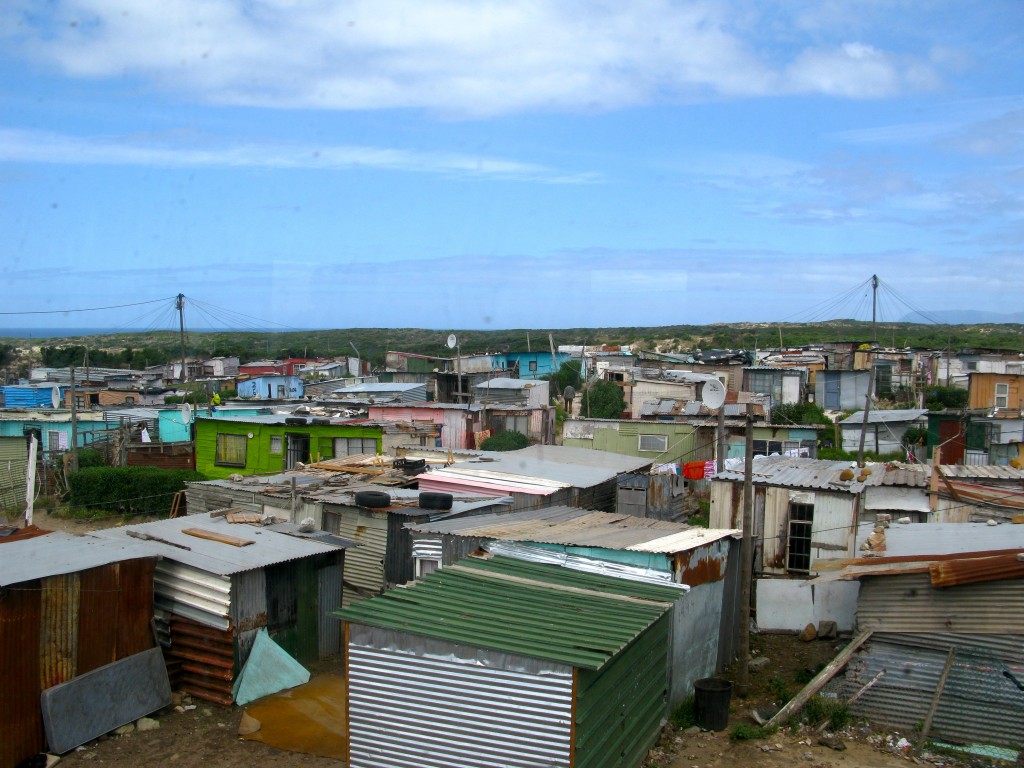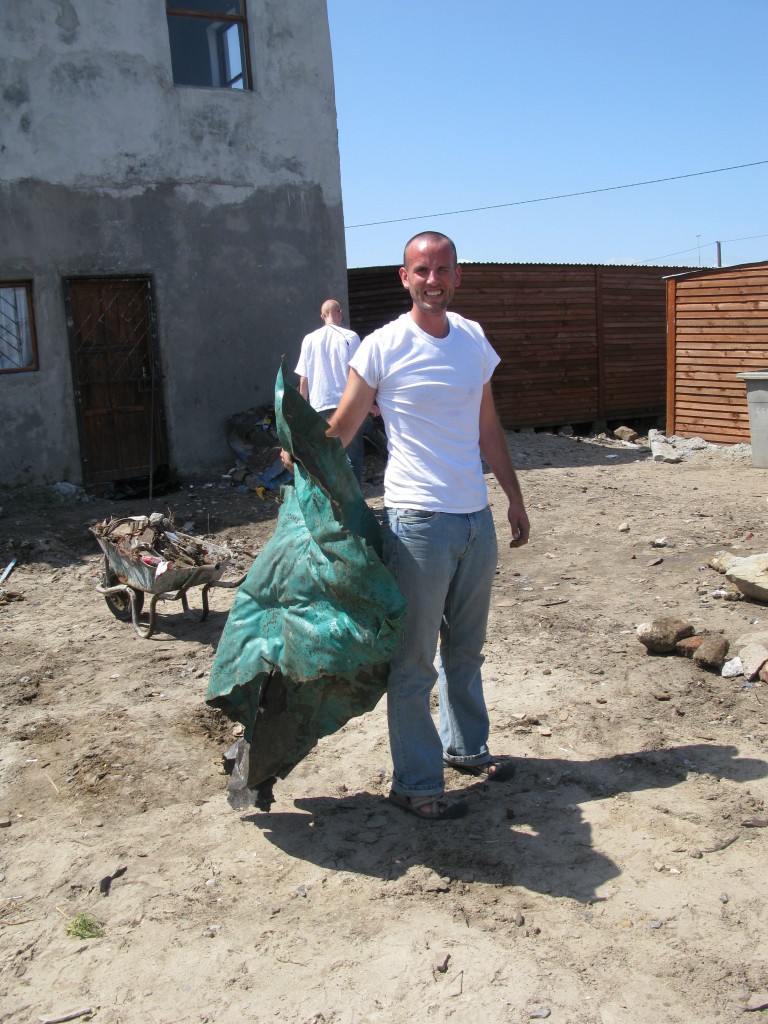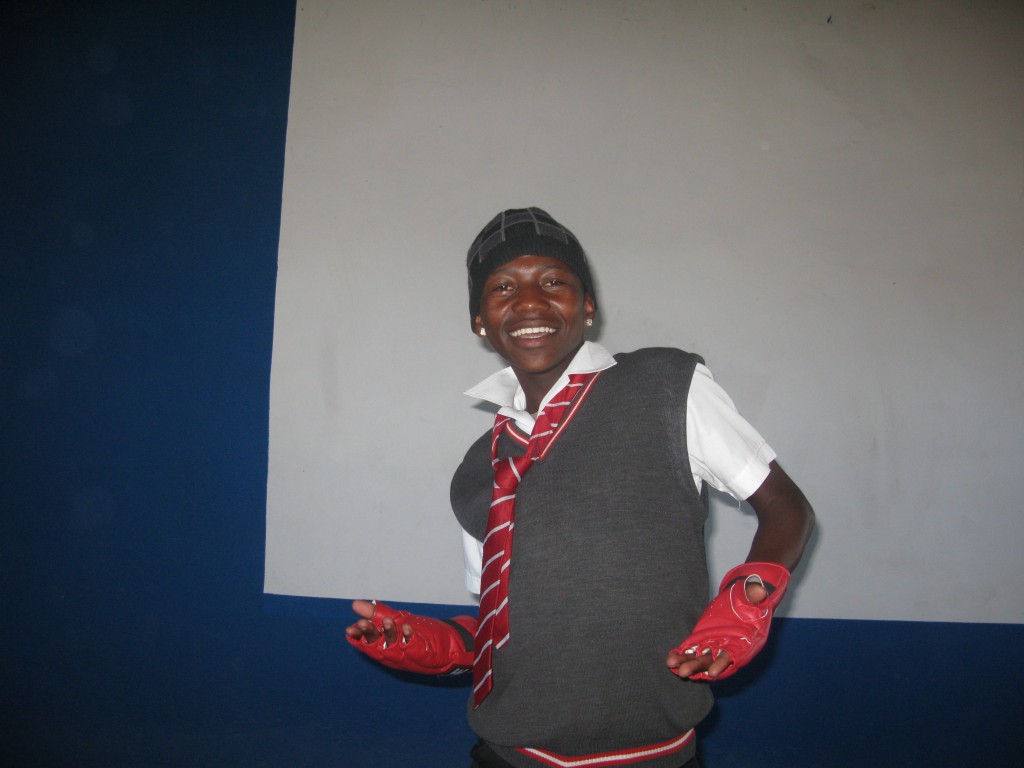Our last day in Cape Town, we joined Courtney Miller, a friend and video journalism professor, on a practicum she created for her students to visit the Indlovu Project in the township of Khayelitscha. The disparity between the luxurious A and V Waterfront area where our ship was berthed and the ramshackle tin homes of the townships is a difficult reality to observe, let alone comprehend. Though apartheid officially ended in 1994, separate-but-unequal conditions for blacks continue to exist throughout South Africa, and a drive out of downtown Cape Town into the townships makes this glaringly apparent. The problem is enormous, and it can be overwhelming to even think about what steps might be taken to eliminate unequal living conditions for such a giant mass of the population.
While we struggled to grasp the enormity of the problems and issues facing the Khayelitscha community, we found hope and inspiration in the work that Di Womersley’s Shaster Foundation is doing. Di has managed to organize the township community by raising funds to build a sustainable eco-village in the midst of all the tin shacks and shanties. Currently, there is a guest house where visitors can come to stay, a medical clinic, and a community center and Montessori kresh where children young and old are taught and nurtured.
Di’s vision is to work with Khayelitscha residents wishing to trade in their current homes for permanent housing with walls made from sandbags and plaster. The unique sandbag construction technique is perfectly suited to the area because it is extremely durable, provides excellent insulation against both heat and cold, is completely fireproof and bulletproof, and would allow locals to build their own structures. Perhaps most importantly, the sand for the bags is readily available in large quantities right in Khayelitscha. Cement used to make government-subsidized housing is diluted with water by local companies so the extra can be sold for a few dollars under the table, but a plentiful local material like sand would be immune from this temptation. The lack of sewer systems begs the question of what to do with human waste in these densely populated townships, so the Indlovu Project uses clean and sustainable earthworm toilet systems. The final vision and business plan for the village is one filled with sandbag homes and buildings, earthworm toilet systems, organic vegetable gardens, and home-based entrepreneurship. Once there is a little more infrastructure, they’ll be able to start home-based businesses with start-up financing from micro-lending organizations such as kiva.org (which, incidentally, was founded by a Semester at Sea alum). You can’t talk to Di for more than five minutes and not get pumped up about what is already being done and what is ultimately possible.
Part of our group spent the day in and around the community center and township filming and interviewing various members of the project’s staff and the people living around the center–they are video journalism students, after all. Others of us cleared away a rubbish heap to get the area ready for the first of the planned vegetable gardens. It felt good to pitch in and get a little down’n’dirty. As we were leveling out the ground from where we had dug up big strips of discarded plastic and carpet, a little girl came walking through. She gave me a crooked smile and knowing look and said, “someone’s been working here” in the isiXhosa language (pronounced [click]losa, where you click your tongue against the roof of your mouth) and walked on through the clearing toward her home. It was indescribably cute, especially after Di gave me the translation.
We’ve already learned that Di loses no time in doing exactly what she says she will. Today, barely a week since we left, she sent us this photograph of the finished garden plot. It was planted by hundreds of members of the township community using recycled items like tires for potting. Fresh veggies and herbs all around! 🙂
Before we left, Shannon handed our camera to a couple of the township’s young men and told them to take pictures of whatever they wanted. Once the camera was in their hands, all walls between us melted away, and we got a real look at their humor and personality. Our day together ended with a crazy group photo shoot with our new friends, the results of which we’ve posted here. We plan to return to South Africa someday, and when we do, we’ll be staying at Makazi’s Guest House for certain. Thanks Di, for sharing your vision with us, and thanks Courtney, for bringing us there to listen.
































